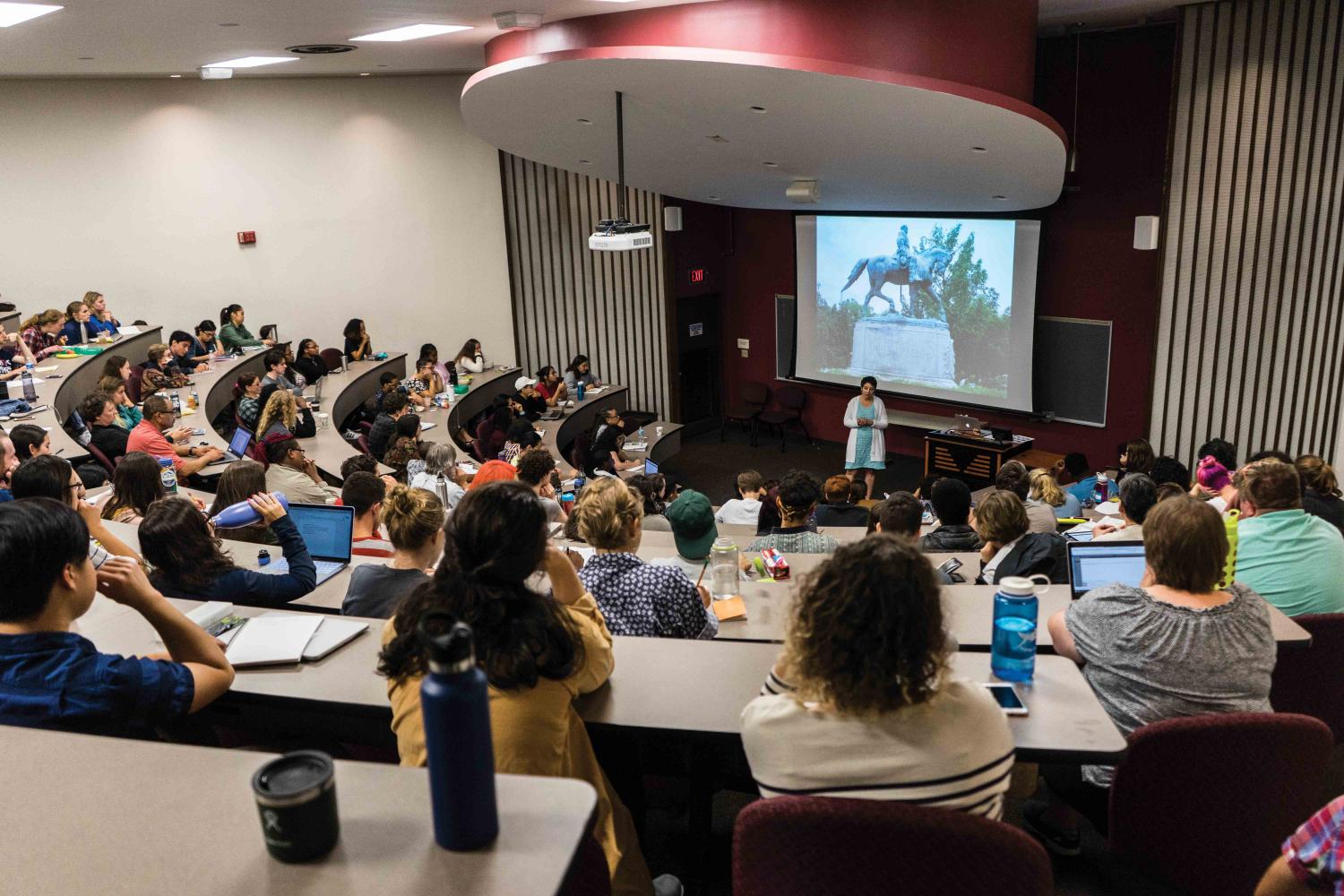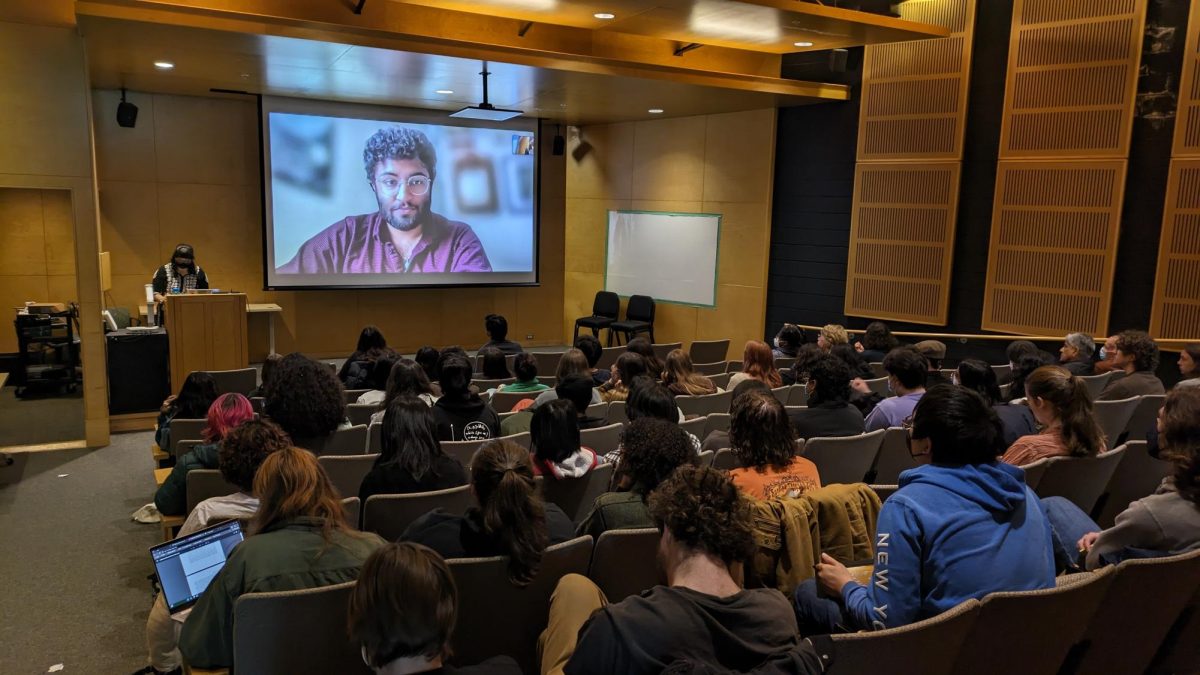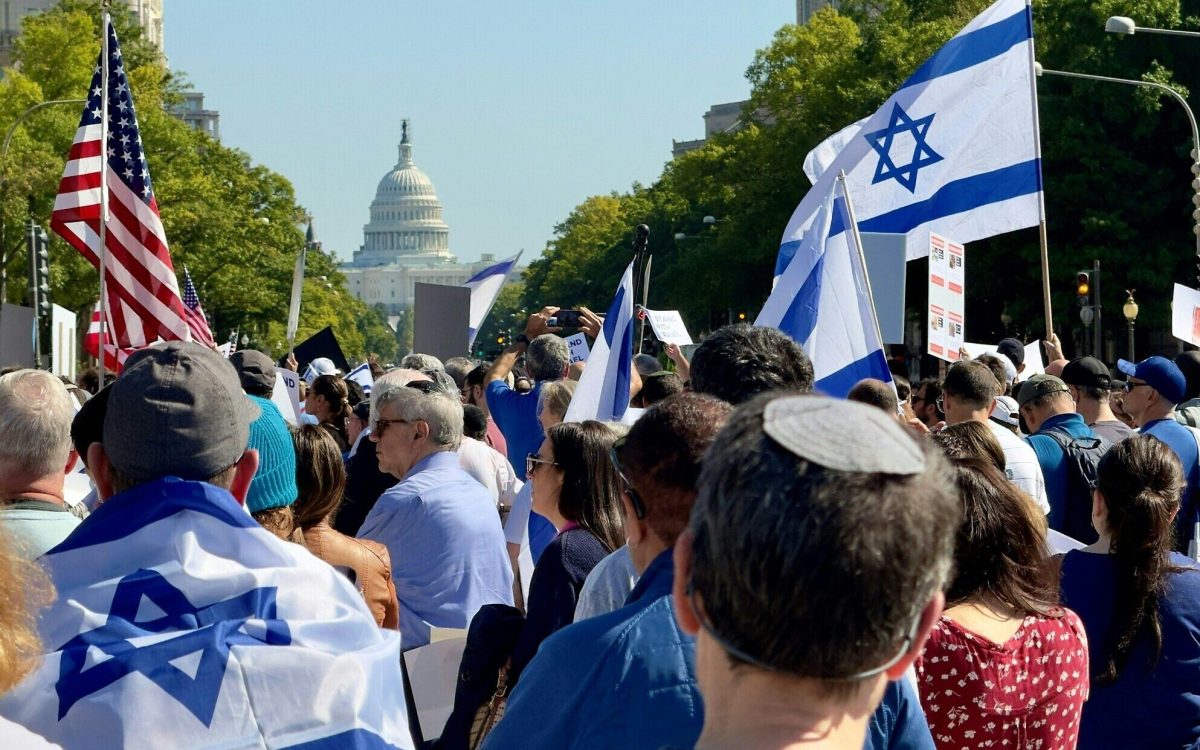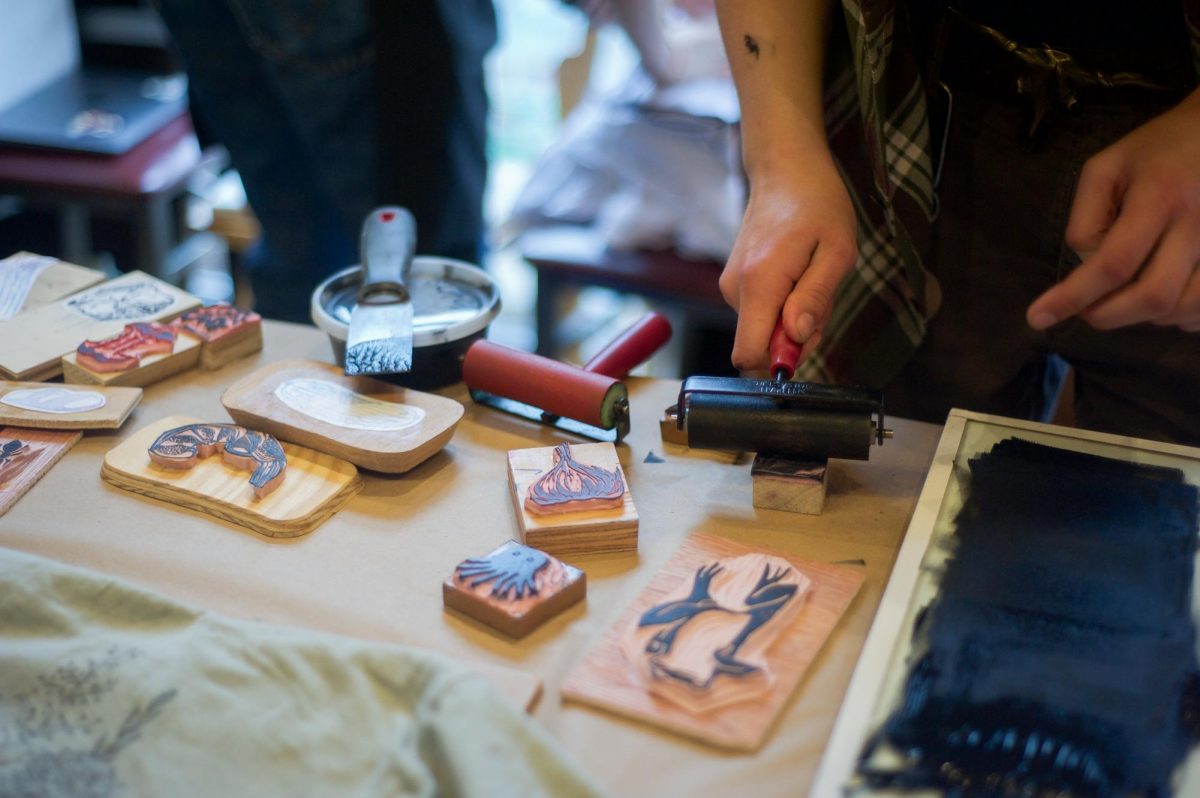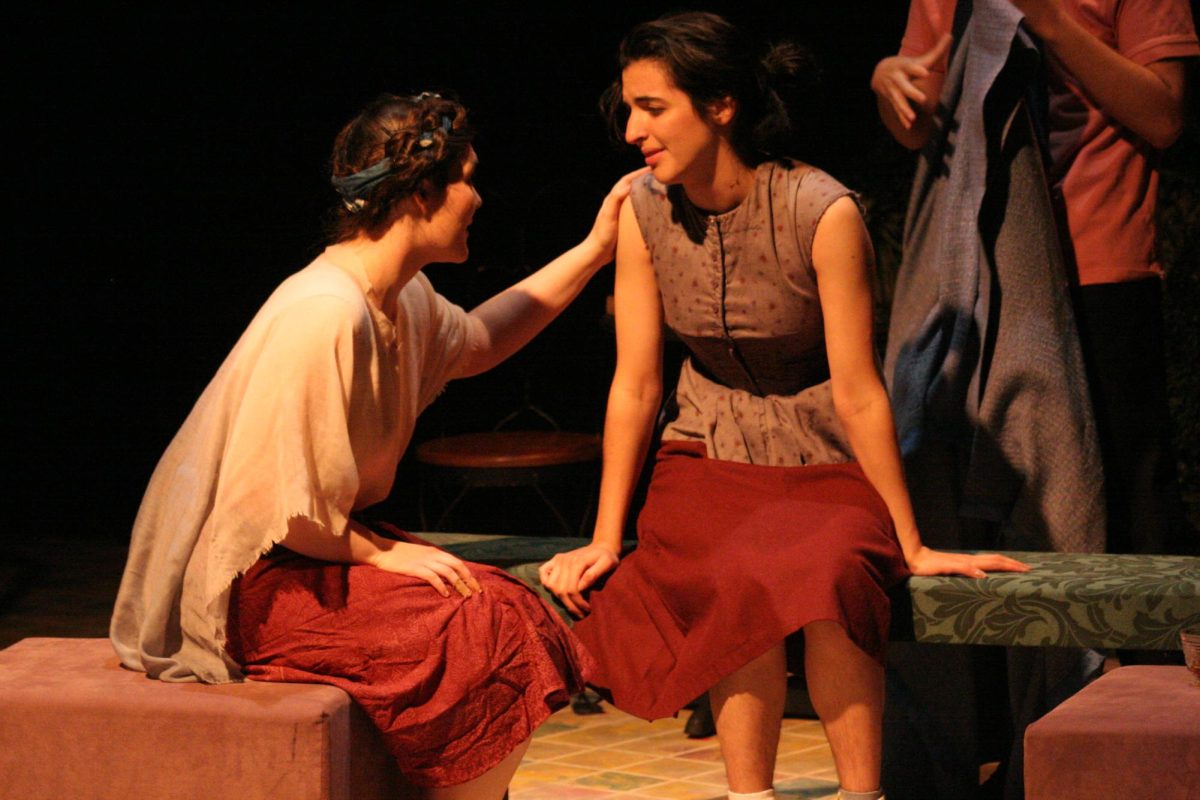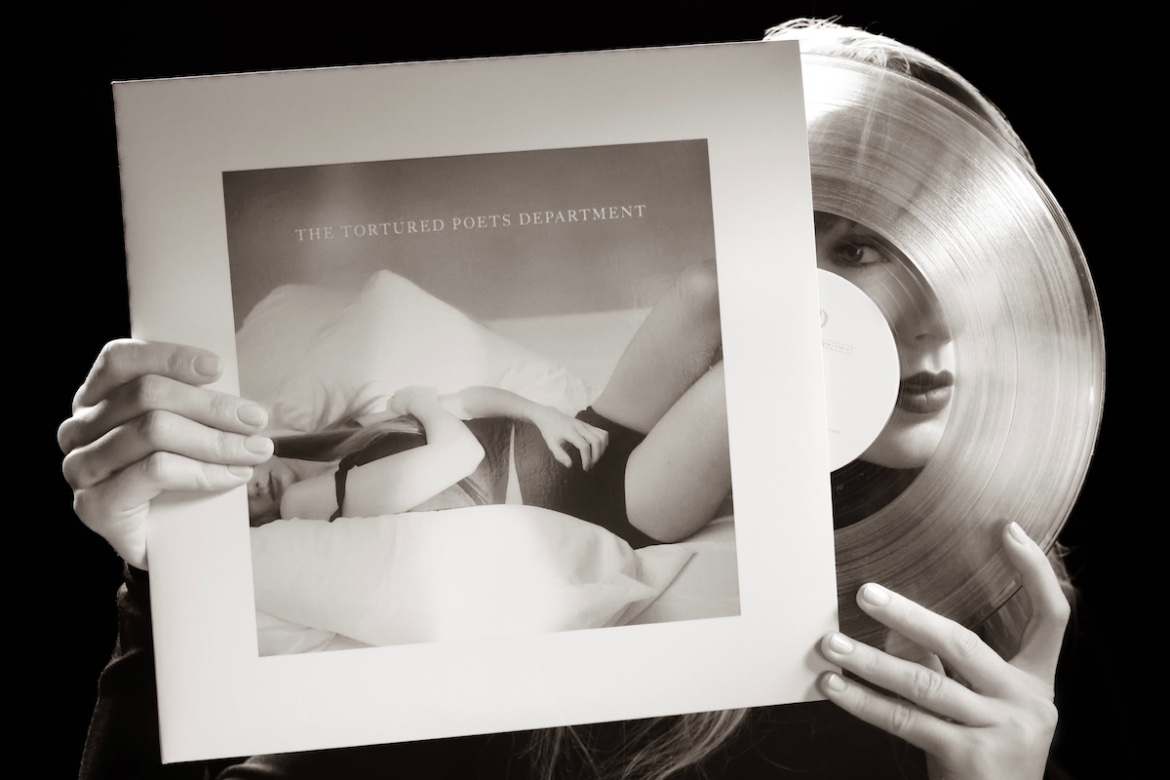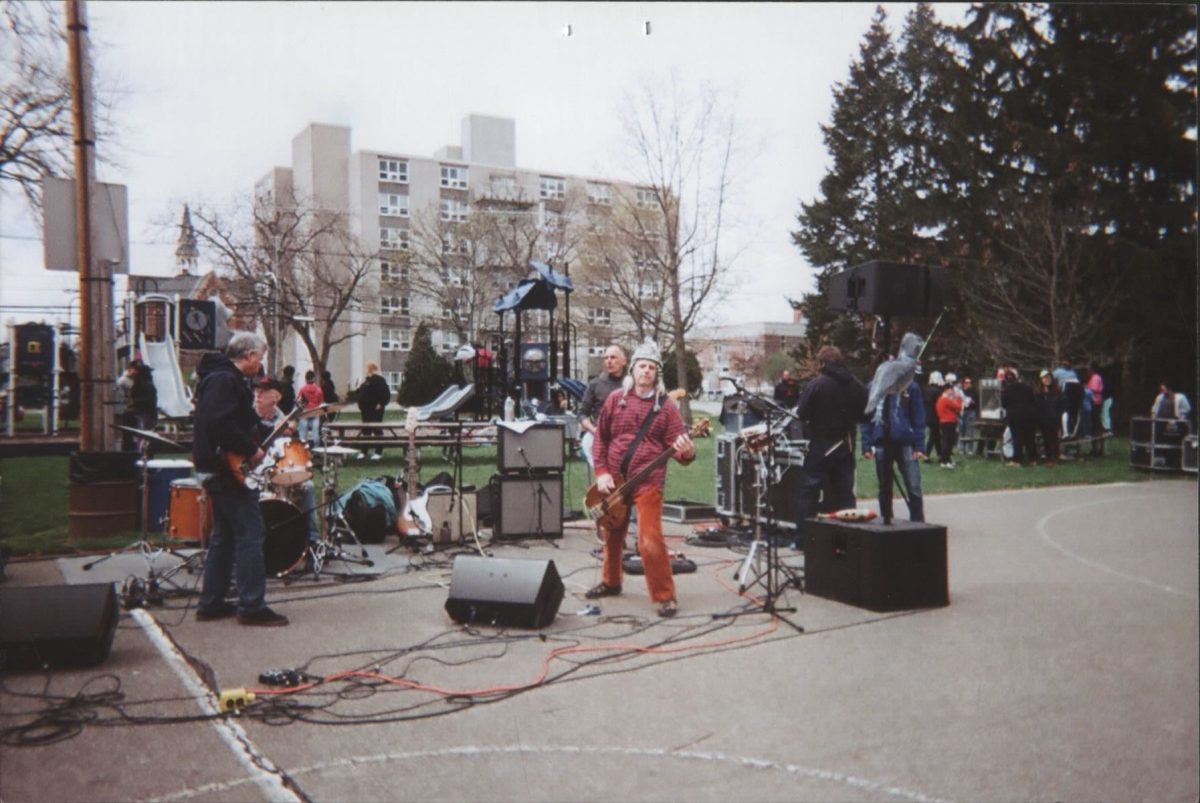Oberlin Congregates in Mourning Charlottesville
Photo by Bryan Rubin, Photo Editor
Chair of the History Department Renee Romano discusses the July 14 protests in Charlottesville, VA, at the panel History Be- hind the News: Charlottesville.
September 1, 2017
Millions of people around the country and world experienced utter shock Aug. 12 as hundreds of white nationalists marching and rallying in Charlottesville, VA, dominated social media and news stations.
The protesters carried torches, shouted racist and anti-Semitic remarks, and sparked violence and terror across the University of Virginia’s campus.
The events in Charlottesville affected Oberlin community members, students, and faculty alike. A small group partook in a vigil in Tappan Square Aug. 13.
Attendees voiced their frustrations, shared each other’s sorrows, and addressed concerns about the nation’s future. Although the College didn’t organize the vigil, affiliates of the Oberlin Office of Religious and Spiritual Life and several professors in the Religion department offered words to those in attendance.
“It was amazing that in less than 12 hours notice so many people got together,” said Steve Hammond, an affiliate of Oberlin Religion and Spiritual Life. “It’s a testament that people felt the need to get together — that people want to deal with it as a community. There are general concerns in this community and throughout Cleveland.”
David Dorsey, director and multifaith chaplain, said that those who gathered had a desire to stand in solidarity against hate and for communities that choose to address their contentious histories.
“Charlottesville landed here because, by majority vote, they elected to own their history, more completely and exactly, and to usher in a future more honest than their past,” Dorsey said. “That is worthy of our attention in Oberlin. The vigil was designed to allow the community to grieve, to stand in solidarity with Charlottesville, and to invite Oberlin to continue the hard work of honesty about Oberlin history — all of it — and to take courage from Charlottesville. This kind of courage, this kind of honesty, comes at a cost.”
Oberlin’s response to Charlottesville continued into this week as Chair of the History department Renee Romano, Chair of the Africana Studies department Pam Brooks, and Associate Professor of History Annmarie Sammartino held a panel yesterday titled History Behind the News: Charlottesville. It touched on various issues relating to the Charlottesville protests, including the meaning behind Confederate memorials and monuments, neo-Nazism within the United States, and Black resistance to white supremacy.
The Charlottesville panel is a continuation of a series in the History department entitled History Behind the News, which aims to analyze current events and attempt to provide historical context.
Romano said that the panel intended to “use the historical knowledge that we have to give students tools to ask questions and engage in conversation about this event.”
Romano added that she hopes the panel better equipped students to tackle the questions many of them were already grappling with, such as how to approach the sale of confederate flags at the Lorain County Fair and how to combat white supremacy both locally and nationally.
Like Dorsey, Romano emphasized that students should not distance themselves from events of this sort.
“On the liberal side we see a lot of statements that these are aberrations,” Romano said. “This is not who we are. This is who we are. This is who white people are. This is a history of saying this is a white man’s country. There is a history of putting in policies that promote that idea and privilege certain people over others. If we can’t face that history and put ourselves in it, and see why it’s wrong, we will never fully overcome it.”
The vigil was organized by Lorain County Rising, a group formed in response to Donald Trump’s election. According to Hammond, members pledge to commit themselves to educating themselves and others, promoting positive change, and engaging in their communities.
“It’s about helping people who need a voice right now to find a voice. Also, it helps connect people,” he said. “It is easy at Oberlin for people to find each other, but in other parts of the county that can be hard. It is designed to be a support system throughout the county.”
Moving forward, Romano pointed to how students can continue dialogue on events like those in Charlottesville with the surrounding community. “Students should find spaces where they can go to listen,” Romano said. “From the community perspective, students come and go. They are not perceived as the best partners. If you hear about community discussion, go listen. Be present. There is a whole history here that I may not be aware of. I should sit back and get a lay of the land if I want to be helpful.”
Dorsey echoed her thoughts regarding the importance of being dedicated to positive change.
“Student commitment over the long haul, not just for a moment, but for sustained attention to wrongdoing, injustice, and suffering is incredibly inspiring,” he said. “Take your sustained commitment with you wherever you go,” Dorsey added. “Step into spaces in the community where good work is already at hand, like Lorain County Rising or El Centro, and find a way to join the effort of those having arrived before us and who live and work beyond the bounds of this campus.”
Students seeking additional support can visit the Office of Spiritual Life or the Multicultural Resource Center or speak with class deans and other staff members.


